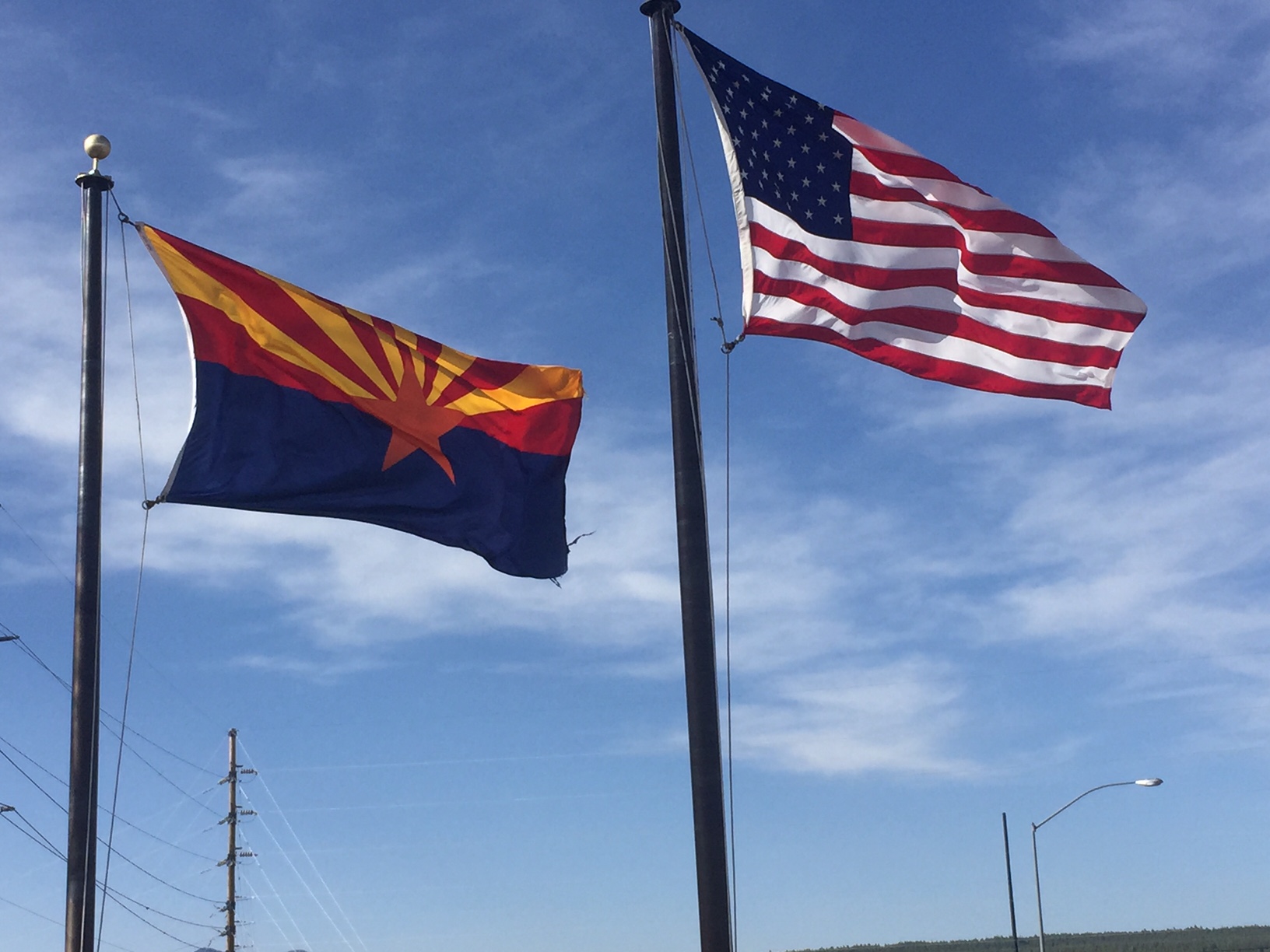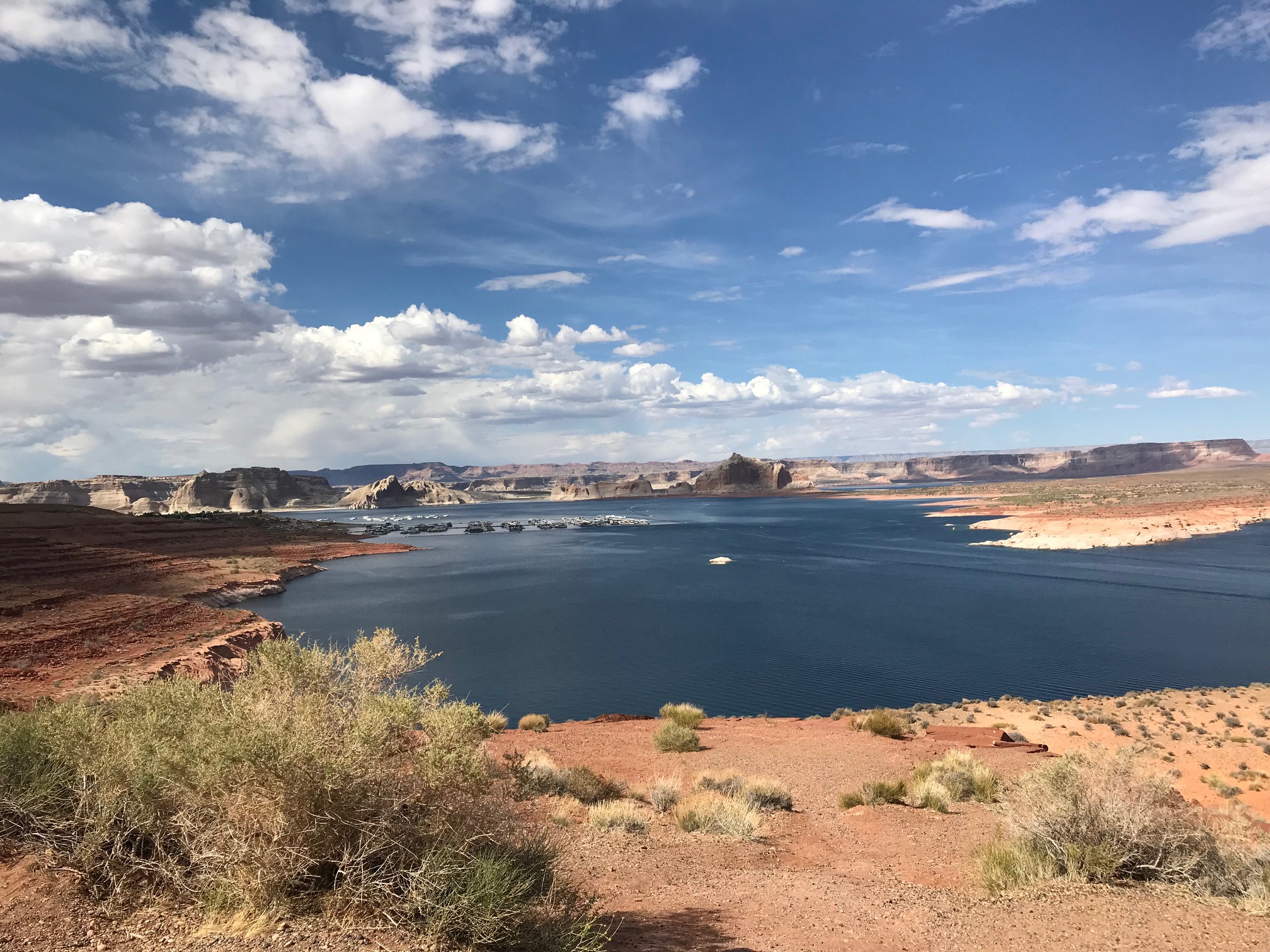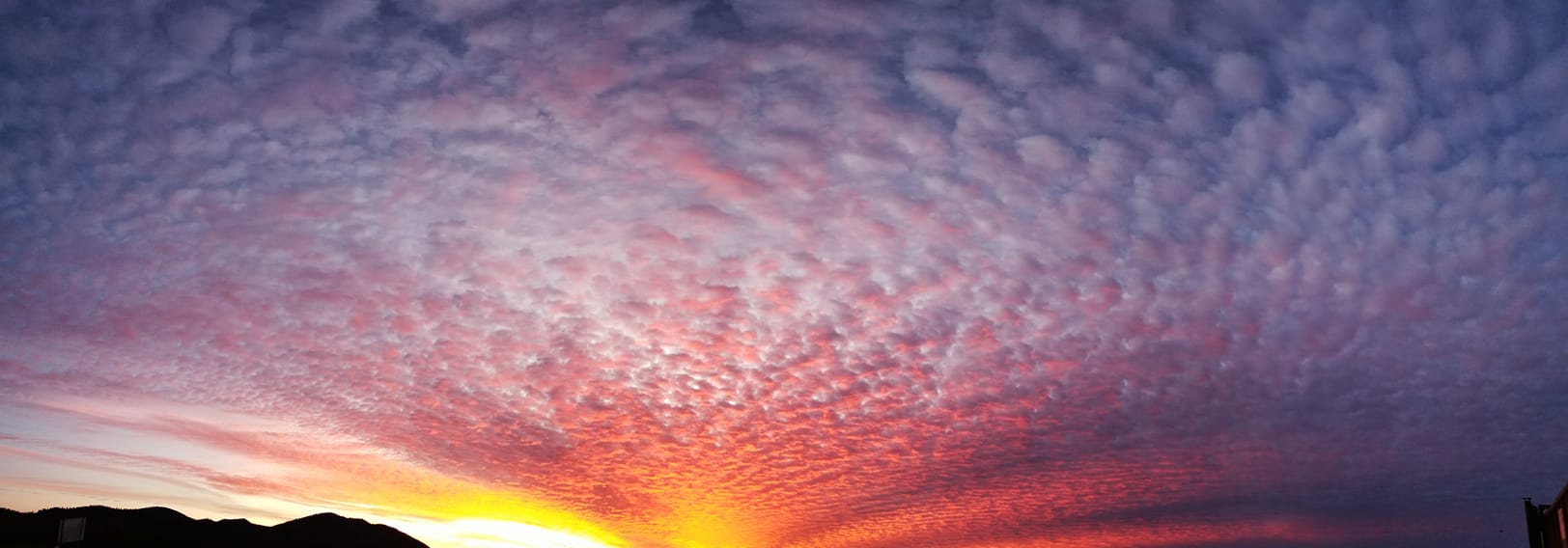
Well above average temperatures will prevail across the Plains and the West Coast this week, while a cold front will bring Arctic air to the South and East Coast Thursday and Friday. Lake effect snow is forecast downwind of the Great Lakes through Thursday along and behind the Arctic front, as well as mountain snow across the Southern Appalachians. Read More >
Why is the sky blue?![]()
On a clear sunny day, the sky above us looks bright blue. In the evening, the sunset puts on a brilliant show of reds, oranges, and pinks. Why is the sky blue?
To understand why the sky is blue, we need to understand a little about our atmosphere and light. Light is a form of electromagnetic radiation (which means it travels in the form of waves possessing electric and magnetic properties). Light from the sun or a light bulb may look white, bu t it is actually a combination of colors. White light consists of all the colors we can see, and each of these colors has a different wavelength. Wavelength is the distance between the crests of the light waves as they move through space.
t it is actually a combination of colors. White light consists of all the colors we can see, and each of these colors has a different wavelength. Wavelength is the distance between the crests of the light waves as they move through space.
The colors blend continuously into one another. At one end of the spectrum are the reds and oranges. These gradually shade into yellow, green, blue, indigo, and violet. The colors have different wavelengths, frequencies, and energies. Violet has the shortest wavelength in the visible spectrum. That means that it also has the highest frequency and energy. Red has the longest wavelength, and lowest frequency and energy.
Light travels in a straight line as long as nothing disturbs it. As light moves through the atmosphere, it continues to go straight until it bumps into a bit of dust or a gas molecule (like oxygen or nitrogen). Then what happens to the light depends on the wavelength and the size of the thing it hits.
Gas molecules are smaller than the wavelength of visible light. When light bumps into them, some of the light gets reflected, or bounces off the molecule, while the rest of the energy is absorbed by the molecule. While all colors are scattered by air molecules, violet and blue are scattered most. The sky looks blue, not violet, because our eyes are more sensitive to blue light (and the sun also emits more energy as blue light than as violet). This process of scattering is known as Rayleigh scattering (named after Lord John Rayleigh, who first described it in the 1870's).
As you look at the horizon, the sky appears much paler in color. To reach you, the scattered blue light must pass through more air. Some of it gets scattered away again in other directions. Therefore, less blue light reaches your eyes. The color of the sky near the horizon appears paler or even whitish. If you go to high elevations, the sky directly overhead can be very dark blue or even bluish-violet. That is because there are fewer molecules to scatter light at higher elevations, so only the shortest of wavelengths experience the most scattering as you go up further into the atmosphere. If you continued upward even more, the sky would slowly turn black as scattering diminishes even more. Space is black because there are very few molecules to scatter light.
At sunrise and sunset, the sunlight passes through more atmosphere than during the day when the s un is higher in the sky. More atmosphere means more molecules to scatter the violet and blue light. If the path is long enough, all the blue and violet light gets redirected out of your line of sight, while much of the pink, orange, and red colors continue along the undeviated path between your eyes and the sun. This is why sunrises and sunsets often are composed of pink, red, and orange colors.
un is higher in the sky. More atmosphere means more molecules to scatter the violet and blue light. If the path is long enough, all the blue and violet light gets redirected out of your line of sight, while much of the pink, orange, and red colors continue along the undeviated path between your eyes and the sun. This is why sunrises and sunsets often are composed of pink, red, and orange colors.
When more molecules are in the atmosphere than normal, say after a major volcanic eruption, the most spectacular sunrises and sunsets can occur. Dust and water particles reflect light just like gas molecules can, therefore having more molecules in the air cause more scattering to occur, causing even less pinks and yellows to reach your eyes. More oranges and reds reach your eyes in this situation leading to intense sunrises and sunsets.